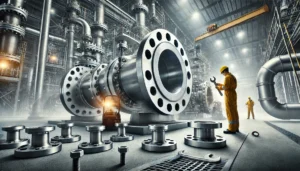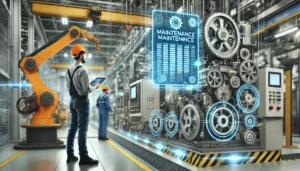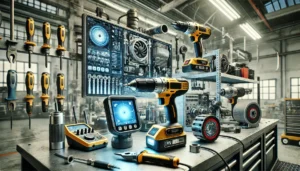Every structure in construction and manufacturing is made up of different parts, and fasteners act as the fundamental building block that links these parts together. These building blocks impact the overall integrity, security, and durability, meaning choosing the right fasteners is paramount. Using the wrong fastener can lead to structural collapses and hazards while increasing maintenance costs.
What are Fasteners and Why are They Important?
Fasteners combine two or more parts into a single functional unit, and the most common types of fasteners include bolts, nuts, screws, washers, and rivets. These fasteners come with their own set of specifications in regards to materials, applications, type of loads, and so on, each type designed for a specific purpose. Fasteners help form a secure joint that can resist many forces like contraction, shear, and twist.
Impact of Incorrect Fastener Selection
Employing the wrong fastener can damage the whole system. For example, using a fastener of incompatible composition can result in galvanic corrosion, deteriorating the joint over time. Also, insufficient strength in the chosen fastener can cause the joint to fail when loaded. Such failures may pose safety hazards. Hence, it is crucial to appreciate the unique features of the application so as to pick a fastener with requisite attributes.
Metrics Used For Selecting Fasteners
In evaluating a fastener for a particular application, the following should be taken into account:
- Material Compatibility: The fastener’s composition should not combine with the constituents of the jointed parts to avoid weakening them by corrosion and also provide an efficient bond. For instance, stainless steel into aluminum components prevents galvanic corrosion.
- Load Requirements: The fastener has to sustain all expected loads that encompass tension and other physical impacts. This requires selection of a fastener with sufficient strength and size.
- Environmental Conditions: Moisture, Chemicals and extreme temperature exposure have a big impact on the performance of fasteners. In such situations, protection against such elements like corrosion materials or protective coatings becomes a necessity.
- Method of Installation: Whether automated or manual, the method of installation can affect the type of fasteners selected. In some cases, there might be a need for fasteners that do not require particular tools for installation.
- Considerations of Pricing: Fasteners have to be of good quality, but in most cases, cost is a factor that can’t be neglected. Cost performance trade-off requires careful planning.
Different Types of Fasteners and Their Uses
- Bolts with Nuts: Bolts and nuts are the most common type of fasteners used in structural constructions since they give a relatively strong and rigid connection. Different grades and materials are available for varying load requirements and environmental conditions.
- Screws: Screws are the most widely used fasteners to join wood, metal, or plastic because they offer high grip retention. They best serve processes where regular dismantling of parts is needed.
- Rivets: Rivets are permanent fasteners designed for applications that cannot be welded. They are used commonly in aerospace and structural steel works.
- Washers: Washers are applied with bolts and nuts to carry out fastening works. They are fitted under the head of bolt or nut to carry out load spreading over the surface to be fastened, protect the surface from being marked and assist in keeping the joint tight.
- Anchors: These provide permanent fastening of various items onto concrete and masonry surfaces. They find particular use in cases where the original material can be drilled into.
Consequences of Using Incorrect Fasteners
Not following the guidelines of fastener application can have the following consequences:
- Structural Failures: A fastener that is improperly selected may buckle under pressure which results in some form of structural breakdown.
- Increased Maintenance Costs: Regular failures or loosening of joints can lead to failure or enraged servicing and repairing.
- Safety Hazards: Such collapses can cause major safety concerns for both the employees and the general public.
- Reduced Service Life: Using the wrong fasteners can cause the structure to wear out at an awkwardly quicker pace.
Best Practices for Fastener Selection
In order to protect the overall value of the structure, consider following the rules listed below.
- Conduct a Thorough Analysis: Take ready material, needs for load, external factors, and details of installation into account in order to determine the correct fastener.
- Consult Standards and Specifications: Fasteners should properly meet the requirements and standards set by the general industry and the specific manufacturer.
- Use Quality Fasteners: Fasteners of good quality should be purchased for enhanced dependability and long lasting elements.
- Regular Inspection and Maintenance: Prevent structural problems by getting regular check-ups to eliminate early signs of degradation.
- Training and Education: Adopted measures should ensure that people dealing with the fastening materials possess ready knowledge and skills concerning appropriate actions.
Conclusion
Choosing the correct fastener is a very important and often overlooked project detail as it impacts the design or project significantly in terms of its safety, integrity, and longevity. The selection of fasteners compliant to industry standards and having scope of material compatibility, load consideration, environmental conditions, and best practices can ensure the chosen fasteners will perform efficiently throughout the life cycle of the structure. It is evident that appropriate choice and maintenance of fasteners should be the utmost concern. This is essential in preserving the reliability and safety of constructions and manufacturing works.










